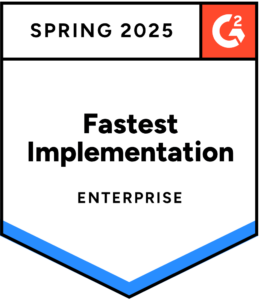Automated Transaction Matching: The Perfect Match for Your Financial Close Process
Blog post
Share
The goal of every finance and accounting function is to support the production of reliable statements during the financial close process and to do so in a way that increases efficiency and effectiveness while reducing costs and risk. However, with supply chain pressures resulting in more intercompany relationships, new business channels with third-party agents creating more data trails, and more complex consumer behaviors and purchase interfaces, many organizations are struggling to manage large volumes of transaction data, keep up with changing payment trends, and provide business-critical insights as the economy shifts. Leading organizations are leveraging automated matching software to do the heavy lifting, ensuring their time and effort are focused on high-value activities that help drive the strategic direction of their organizations.
Challenges of an Inefficient Transaction Matching Process
Transaction matching is a foundational process in the financial close. However, for companies that use a manual process to match a high volume of transactions, the process can present challenges for the organization, such as a lack of efficiency, increased costs, and talent challenges.
Lack of Efficiency
Working with unstandardized processes and inflexible systems wastes valuable time and effort. This is especially true for transaction matching, as it requires compiling data from multiple sources that need manipulation to load into the reconciliation properly before they can be matched. When done manually, this often results in errors and creates bottlenecks that delay tasks, lengthen the time to close, and take away time from higher-value initiatives.
Increased Cost
Allowing manual methods and a lack of efficiency to compound in the transaction matching process results in increased costs for the organization. When finance and accounting teams are caught up trying to match and review reconciliations, they have no additional time to investigate exceptions or ensure the accuracy and reliability of the overall close. With no time to spare, errors are often missed, which results in write-offs and higher audit costs.
Talent Challenges
In Deloitte’s recent survey, CEOs cited talent shortages as their main concern for the future. Technology is vital in attracting and retaining your best talent. If an organization handles the transaction matching process without modern accounting automation tools, they run into issues like those previously mentioned costing the organization great talent.
Benefits of an Automated Transaction Matching Process
As companies grow and begin to reconcile new sources and higher volumes of data, a manual matching process cannot effectively scale to meet the organization’s reconciliation requirements. By utilizing transaction matching software, your organization will have more efficient operations, reduce costs, and empower your talent to reach their full potential.
Efficient Processes
Leveraging automation and integrations enables quick and accurate transaction matching across multiple sources to ensure accuracy without compromising key controls. With a single system to manage the account reconciliation process, the organization has complete visibility into the process. Instead of scheduling multiple status update meetings, management can log into the platform and see the matching process status, leaving them with only the exceptions to review.
“We used to spend a significant amount of time and effort on low-value, tedious tasks. With Trintech’s solution, those tasks have been automated so our teams can focus their time and effort on high-value tasks. We also now have visibility to easily investigate any issues in the processes, like exceptions.” – Danica Pension
Reduce Costs
Trintech’s transaction matching software runs the process in the background before teams come into the office. The data integration and automation allow finance and accounting teams to focus on exception items with full tracking, audit trail, and the capability to generate journals to resolve. This facilitates a more efficient close, increases the quality of data, and helps to reduce costs.
“Teams across the globe, internally and within our BPO, were operating remotely in our Trintech solution with no decline in performance. Trintech sets people up for success and operates as the crossroads of process, technology and increased efficiency, and allows us to optimize costs while making controls more robust and effective.” – Boston Scientific Corporation
Empower Talent
Instead of manually combing through and reconciling a high number of transactions, your team can utilize accounting automation tools that do the work for them. This frees up time they’d typically spend figuring out the root cause of discrepancies, creating a smoother close process. By automating the more mundane aspects of the financial close process, like the transaction matching process, your finance and accounting teams can experience improved work-life balance while putting their highly trained skillsets toward tasks that add value to the organization overall.
“Trintech makes getting it all done possible. It enables and empowers the organization to run at peak performance. With cleaner, faster data inputs comes richer, timely analysis and the ability to do high-value problem solving and strategic thinking. By allowing the technology to do what it is built to do and enabling employees to focus on more engaging and productive work, our finance team can see greater value not only from a budget perspective, but also in having a foundation from which to build or enhance a workplace culture that is more likely to attract talent and boost employee morale.” – Tom Walker, CFO, Dallas Cowboys
Strategize to Implement Automated Matching Software
Maybe you recognize the need and value of investing in an automated transaction matching solution, but you’re unsure where to begin. When developing a framework, consider how your organization can move through these hierarchical steps:
- Quality and consistency of source data: How do I automate the data loads and the manual manipulation of the source data from an existing or legacy source system?
- Exception management tools: How do I let the solution reduce the manual workload matching the remaining items that do not automatically match according to my current configured rules?
- Controls operate consistently: How do I get the solution to flag items for further investigation, generate the requests by email, and ensure they are resolved?
Written by: Lauren McCrohan






